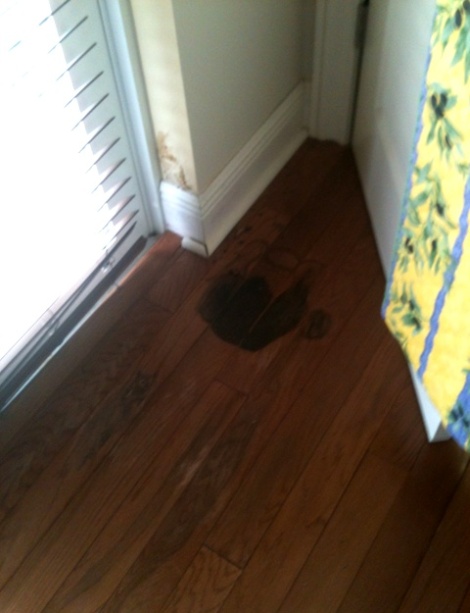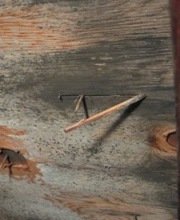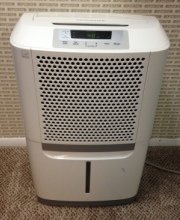Find a Mold Specialist Now
Click or Call, Toll-Free 24/7
Water Damage to Floors
The water damage floor coverings and even subfloors sustain from flooding or something like a broken pipe can be significant. It can be time-consuming and costly to repair. We'll tell you how to prevent and repair floor water damage. You can learn more about cleaning up water damage here, including water damage to surfaces other than floors.
Preventing Water Damage to Floors
While you can't prevent floods or broken pipes, there are some things you can do to prevent water damage to floors or at least to minimize the damage.
- Clean up water spills right away.
- Check regularly for leaks under sinks, behind toilets, and around appliances like washing machines and dishwashers. Repair any leaks promptly.
- Deal with any serious leaks, flooding, or other water damage as quickly as possible to keep the damage as minimal as possible and to reduce the risk of mold.
Dealing with Water Damage Floor Coverings Have Sustained
When floor coverings have gotten very wet, it is possible, even probable, that the subfloor has also gotten wet. Simply drying the carpet or vinyl or other floor covering may not be sufficient. It may be necessary to take up the floor covering to check on the subfloor, allow it to dry if damp, and make any needed repairs.
Carpet – Wet carpet needs to be dried as quickly as possible. In the event of minor spills or leaks, carpet can simply be patted dry with absorbent towels.
When carpet has suffered greater water damage, perhaps due to flooding, dehumidification and water extraction equipment is needed to remove the water if the carpet is to be saved. If the carpet can be thoroughly dried within 48 hours, it may be salvageable. Otherwise, it will likely need to be replaced.
After the carpet has dried, it should be vacuumed with a vacuum equipped with a HEPA filter to remove any traces of mold, bacteria or other debris.
Note that the padding beneath carpet is more difficult to clean adequately and should be discarded and replaced even if you are able to salvage the carpet itself.
Allow the subfloor to dry and make any necessary repairs before replacing carpet. If you were able to salvage the old carpet, make sure it has dried completely before putting it back down to prevent mold.
 Water damage to hardwood floors
Water damage to hardwood floorsVinyl or Tile – In the event of minor spills or leaks, these can simply be dried with absorbent towels. In the event of significant leaks or flooding, it may be possible to save the vinyl or tile but you'll need to pull it up in order to allow the subfloor beneath to dry and to make any necessary repairs. Note that if mold begins to grow on the adhesive on the back of the vinyl or tile, it may be impossible to remove the mold and the floor covering will then need to be replaced.
Hardwood Floors – Hardwood floors need to be dried carefully to prevent the boards from cracking or splitting. To reduce the water damage floor boards can suffer, it may be necessary to remove some of the boards. This prevents them from buckling due to swelling and can also facilitate the drying process. Allow both the hardwood floorboards and the subfloor to dry completely before making repairs.
You may wish to call in a water damage restoration service to assist with drying hardwood floors. Professionals have equipment to force air underneath the floorboards to help them dry evenly and completely. Hardwood floors can be quite costly and a professional restoration service may be able to prevent a good deal of floor water damage and save your floorboards.
Here is information on dealing with water damage to laminate floors.
Dealing with Water Damage to Subfloors
After you've removed the floor coverings, you need to allow the subfloor to dry completely. This can take several days or longer. Open windows and use fans to increase air circulation to facilitate drying. Do not begin making repairs and do not replace floor coverings until the subfloor is completely dry. Replacing floor coverings too soon can lead to mold growth.
Consult a Water Damage Restoration Service
If you need assistance dealing with water damaged floors, you can consult with a professional from a water damage restoration service. An experienced professional can advise you and provide the help you need. Note that the U.S. Environmental Protection Agency recommends calling in a professional to deal with water damage caused by water that may have been contaminated by sewage. To get a list of water damage restoration services in your area, just follow the link.
Return From Water Damage Floor To Our Main Water Damage Page
Privacy Policy Terms and Conditions Accessibility Do Not Sell My Information Disclaimer Contact Us




